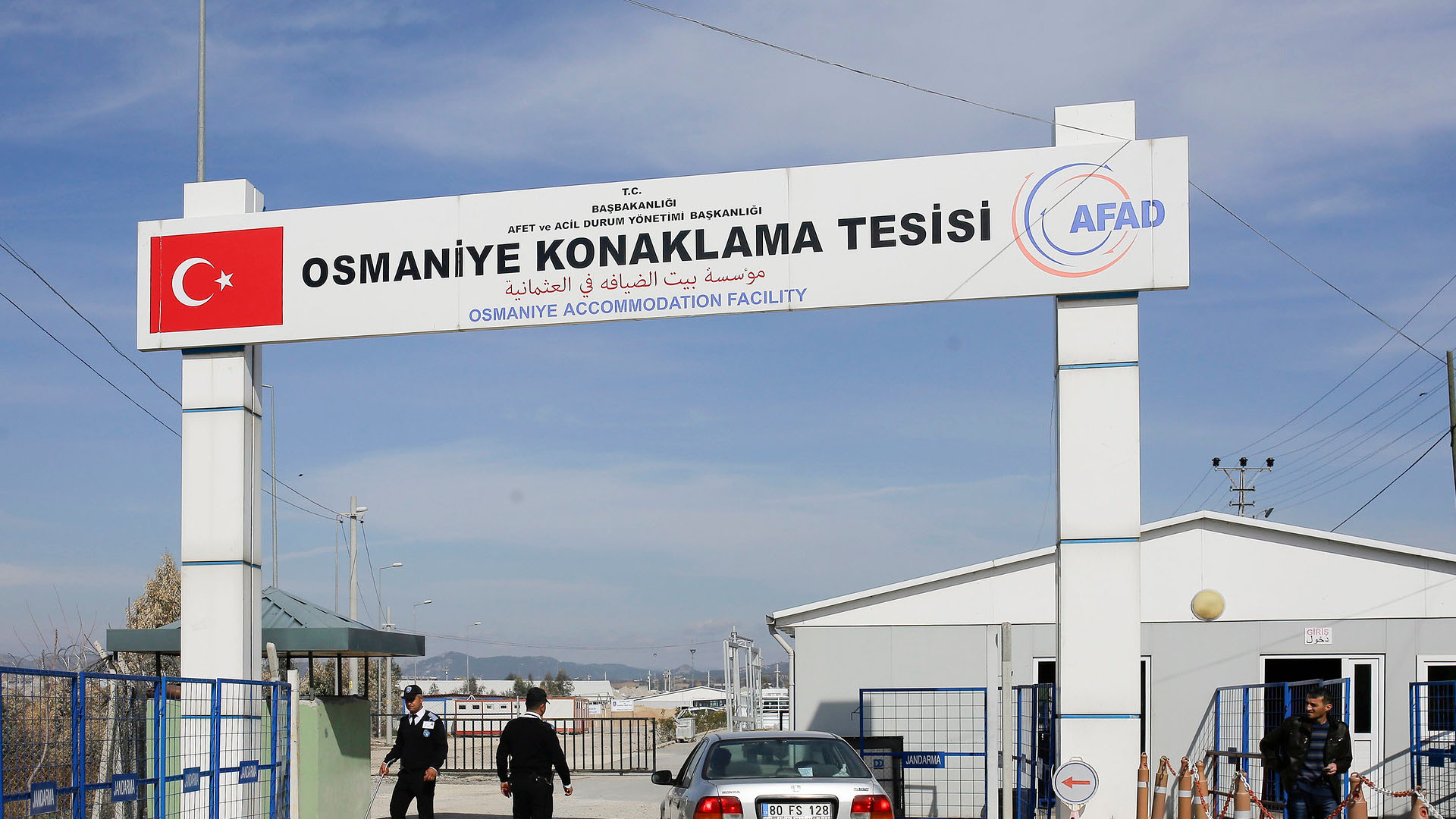Theme
This paper discusses the current state of Syrian refugees in the EU and Turkey, and how the Assad regime’s fall might eventually influence their lives in the near future. While the potential regime change in Syria can signal stability, the ambivalence of the situation and of the region threatens the lives of Syrians abroad.
Summary
The unexpected fall of the Assad regime in Syria triggered many questions regarding the country’s future, potential transition to democracy, and –importantly– the future of its citizens both within and outside the country. Considering the immense number of Syrians abroad, whose status may shift from refugees to being a diaspora, the regime’s fall has been received with joy but also with many more questions. One major issue is: what will happen to all the Syrian refugees? Despite their small number, the news of Syrians returning to Syria from neighbouring countries hit the headlines recently after the news of the regime’s collapse. However, more than their return, what has complicated the situation has been the decision of some European countries to immediately halt refugee applications from Syrians given these developments. Hosting the highest number of Syrian refugees, Turkey has focused more on upcoming political steps for regime-building in Syria while allowing voluntary returns. However, as the situation in Syria is far from stable, this paper recommends changing the ‘return’ rhetoric and practice immediately as it complicates the lives of Syrians who fled not only the Assad regime but also the country’s ongoing conflict, political instability, economic destitution and involvement of ISIS –among other armed groups and major powers in the region–. Furthermore, as the regime take-over in Syria might trigger the departure of more refugees from the country, including Alawites, Christians and other minorities, the evaluation of the situation must consider not only developments regarding the government but also the humanitarian situation for Syrians themselves.
Analysis
1. Current developments in Syria
On 8 December 2024 the Syrian regime, led by the Assad family for more than five decades, collapsed. The armed rebel group Hayat Tahrir Al-Sham (HTS), the leading opposition force ruling the Idlib region, took over regime-held areas, finally declaring its control over Damascus. This rapid offensive followed months of mounting tension, with HTS forces gaining ground in Aleppo, Hama and Latakia provinces, leading to the regime’s fall.
While these developments have been greeted with celebrations and joy by Syrians all over the world, HTS’s jihadist roots immediately raised doubts as to whether there would be stability and peace in the country. HTS, which took its name after cutting ties with al-Qaeda in 2016, has since tried to rebrand itself as a more moderate force. However, many Western countries, including the US and the EU, still classify it as a terrorist organisation. Furthermore, critics point to the group’s hardline implementation of Sharia law in Idlib and the past execution of dissenters as evidence of its authoritarian leanings.
Hence, HTS’s proclaimed commitment to reform and inclusivity is met with widespread scepticism due to its history of unfulfilled promises and actions that contradict its stated goals. HTS has declared its commitment to governmental change, granting equal rights to all Syrians, decentralisation, regional autonomy, and amnesty for Assad’s soldiers. Despite this, scepticism abounds. For instance, during its initial takeover of Idlib, HTS promised political inclusivity but sidelined other opposition factions and imposed strict governance structures, favouring its own leaders. Many observers fear that this pattern could repeat itself on a national scale. Moreover, the amnesty offered to Assad’s soldiers has reportedly not been fully upheld, with incidents of retributive violence against regime loyalists emerging in cities like Homs and Latakia.
Adding to the uncertainty, HTS is not the only armed opposition group active in Syria. Factions such as the Syrian National Army (SNA), Kurdish troops in the Syrian Democratic Forces (SDF) and various Islamist militias still operate across the country. In Afrin and northern Aleppo clashes have already erupted between HTS and other factions vying for control of key territories. Furthermore, ISIS remains a persistent threat, with sleeper-cells conducting attacks in rural areas of Deir Ezzor and Raqqa, exploiting the political vacuum.
Against this backdrop, the caretaker government announced by HTS is expected to hold power until 1 March 2025. Its primary aims include offering stability, preventing power struggles between rebel groups, and ensuring basic services for citizens. UN Security Council Resolution 2254, adopted by the Council for protecting the sovereignty, independence and unity of Syria, suggests an 18-month period of transition and could serve as a guideline. Government officials talk of a four-year transition period prior to an expected general election. Yet the interim government’s ability to achieve its stated goals is widely questioned given the volatile environment.
This is compounded by Syria’s dynamic and complex social fabric, which includes sectarian, ethnic and ideological divisions. For example, Alawite communities, historically aligned with the Assad regime, fear persecution under HTS rule, while Kurdish leaders have expressed concerns about the group’s commitment to regional autonomy. Sunni Arab tribes in eastern Syria are also wary of HTS due to its perceived favouritism towards certain factions. The survival of the interim government and the successful establishment of an orderly inclusive administration are critical in the coming months and years. Failing to do so, Syria will remain far from being considered a stable country, particularly for its citizens contemplating a return from exile.
2. Events immediately after the regime’s collapse
As soon as the news of the fall of the Assad regime reached Europe, besides the initial shock, some EU member countries immediately halted processing the applications of Syrian refugees. For instance, Denmark suspended asylum applications for Syrians, citing the potential for a significant shift in Syria’s political and security situation. Similarly, Hungary and Poland, known for their restrictive asylum policies, announced that Syrian applications would be halted until there was a greater clarity about the new regime’s stability. Although these moves surprised many, they align with long-standing concerns voiced by certain European governments about the difficulty of accommodating new waves of refugees and their willingness to return, or sometimes deport, refugees either to third countries or now back to Syria.
To manage refugee movements, Europe has relied heavily on deals with Syria’s neighbouring countries, such as the EU-Turkey Deal of 2016 and subsequent agreements with Jordan and Lebanon. The agreements aimed to limit refugee flows into Europe by providing financial aid to host countries in exchange for their commitment to shelter displaced Syrians. For instance, under the EU-Turkey Deal, Ankara received €6 billion to enhance its infrastructure for housing and supporting refugees. Similarly, the Jordan Compact provided funding to create jobs for Syrian refugees, while the Lebanon Compact offered financial support for health and education services in refugee-dense areas.
3. The response of Europe and Turkey to current developments in Syria
Unsurprisingly, Europe’s immediate response to the fall of the Assad regime involved reinforcing these arrangements. Ursula von der Leyen, President of the European Commission, announced on her Twitter account that an additional €1 billion would be provided to Turkey to assist with its continued hosting of millions of Syrian refugees. The announcement was widely interpreted as an extension of the EU-Turkey Deal and reinforced the perception that Europe has no intention of accommodating more refugees within its borders. Indeed, some analysts suggest that the EU’s leadership hopes that improved conditions in Syria will eventually encourage Syrian refugees currently residing in Europe to return to their home country.
The push for return was echoed by individual member states. Initiated by Germany, many member states halted the asylum applications of Syrians. Austria’s Chancellor, Karl Nehammer, publicly called for a reassessment of Syria’s situation to facilitate the deportation of Syrian refugees. Similarly, the Greek authorities reiterated their preference for Syrians to return home, highlighting Greece’s struggle to manage the influx of migrants arriving via the Aegean Sea. These statements, rushed by the rhetoric of return, only further complicate the situation for refugees and reveal a certain hypocrisy in Europe.
For Turkey, whose government was engaged in anti-Assad forces almost since the beginning of the civil war, it was an outcome for both securing its national interests in the region and playing a bigger role in the new regime’s establishment in Syria, in addition to curbing the activities of Kurdish forces in northern Syria. Thus, unlike Europe, Turkey focused more on its own political goals than on the Syrian refugees within its borders, although the government facilitated the voluntary return for those who wished to do so by opening more border cross-points.
Furthermore, while many discussions focus on the return of Syrians, developments in Syria could instead foster new waves of displacement, increasing the likelihood of more refugees attempting to reach Europe and Turkey. There are already reports that over 40,000 people already been displaced following the regime’s collapse. The potential drivers of this include persecution under the new regime, with reports already surfacing of HTS detaining individuals suspected of loyalty to the Assad government. Ethnic and religious minorities, such as Alawites, Christians, Kurds and Druze, may flee escalating sectarian tensions. Civilians in conflict zones, particularly in contested areas like Raqqa or the Kurdish-held north-east, may also feel compelled to leave due to ongoing violence. Additionally, the collapse of Syria’s economy –marked by inflation, unemployment and a lack of basic services– continues to push people towards Europe.
This is not to say that there are no efforts from host countries for the improvement of Syria, both politically and economically. Recently, the French and German Foreign Ministers visited Damascus and offered help in exchange for democratic measures and the respect for minorities. They also said that depending on how the transition develops, political and economic sanctions could be lifted. Similarly, Turkey also aims for regional stability by engaging with the new government in Syria, emphasising the importance of the latter’s territorial integrity.
4. What can be done to improve refugee governance and for Syrian refugees?
The fall of the Assad regime and the rise of HTS in Syria have reignited debates across Europe and Turkey about the future of Syrian refugees. While some European governments see the regime change as an opportunity to encourage or even mandate repatriation, the situation on the ground in Syria remains far too volatile for many refugees to consider returning. Economic instability, concerns about persecution under HTS and the destruction of infrastructure have left the majority of Syrians hesitant about returning to their homeland.
This calls for better refugee governance rather than reiterating the return discourse for plenty of reasons. First and foremost, the immediate reaction regarding return indicates that the host countries are prioritising their goals over the protection of Syrian civilians. This and halting asylum applications or facilitating deportations are in conflict with the norms of international refugee protection, particularly the principle of non-refoulement, which forbids returning individuals to a country where they might face persecution or harm. This still applies, as Syria is far from being either stable or safe. Thus, for host countries to prove their commitment to human rights and humanitarian values, it is vital to change the rhetoric of return. It erodes trust not only between refugees and host states but also within international partnerships. Refugee governance must be grounded in transparent, consistent and principled approaches to rebuild trust and legitimacy.
There are many aspects to consider before embarking on a full discourse of return to Syria. Before reaching any conclusion at the governance level, what Syrians think about returning is the most crucial question to ask. Syrians have the right to celebrate the fall of the regime but still be concerned about the country’s future. The joy should not be confused with any plans for the near future or with a willingness to return, since many Syrians are reported to believe that they should ‘wait and see’. Also, although Syrians are mostly described as a monolithic group, there are diverse aspirations, different backgrounds and migration journeys that influence their perceptions of return. Understanding these perceptions ensures that policies are not only humane but also realistic and sustainable.
Secondly, in relation to trust, Europe’s focus on return harms refugee well-being as repatriation cannot occur without securing safety and dignity in the country of origin. As much as recognising complex problems, refugee governance should recognise the complex realities of Syria and the other dynamics in the region, such as ISIS –hence, in extension, Syrian refugees–. The conditions in Syria and the region are far from stable with the ongoing security, political and economic challenges in addition to the ISIS threat. Although most Syrians at the beginning of the Civil War fled the Assad regime, in the following years many fled ISIS and its growing influence in the region. Therefore, despite the regime’s fall, ISIS is still present and expanding its power –making it a discouraging factor when contemplating return–.
Therefore, the rushed response of return intensifies the stress in the lives of Syrian refugees, who already have concerns about the ongoing conflict, economic collapse, failed infrastructures and political repression despite current developments regarding the fall of the Assad regime. Thus, effective refugee governance demands nuanced assessments that involve refugees’ perspectives, expert evaluations and close monitoring of conditions in the country of origin.
Despite some refugees obtaining European citizenship, many Syrians are under temporary permits trying to establish a safe and secure life in Europe. The rhetoric of return hurts refugee governance when iterated with deportation, fuelling uncertainty about the future. Hence, most importantly, refugee governance should not aggravate existing vulnerabilities.
Third, the rhetoric of return indicates a political response, succumbing to domestic pressure, rather than offering a sustainable solution for refugee governance. The rising anti-refugee sentiment throughout Europe is well known and documented. Thus, it is hard to separate the return or repatriation response from these anti-refugee sentiments. Therefore, refugee governance should prioritise long-term strategies involving current developments in Syria, uncertainties in the country and potential problems, in addition to regional stabilisation efforts and coordinated international responses.
Fourth, for many Syrian refugees, Europe and Turkey have become their homes after more than a decade of displacement. These aspects can make return more complicated, as they might involve leaving behind the progress many refugees have achieved in their host countries. Germany, for instance, which hosts the highest number of Syrians in Europe, has seen significant integration efforts by its refugee community. Many Syrians have learned German, found employment and attended school regularly, while adult refugees increasingly participate in vocational training programmes. Germany is the example of making a home in Europe, but other European countries should follow suit. This is also true for the case of Turkey. Although its approach to refugee governance could be characterised as ‘learning along the way’, it has proved to be more complicated in the absence of proper legal pathways to obtaining citizenship, which would have provided more stability to the refugee community.
In relation to host countries becoming a home, many Syrians have a cultural attachment as well. Especially for the younger generations, returning might involve complex identity negotiations. For most Syrian children born and raised in Europe and Turkey, those are the only country contexts they have known, while, in addition, they are often more fluent in the local language than in Arabic or other languages spoken in Syria. This is a major challenge for many Syrian families, in addition to the region’s unpredictability and its weak or non-existent infrastructures, as their children have already become part of their host countries’ cultural and educational systems.
Conclusions
The fall of the Assad regime and the subsequent rise of HTS mark a pivotal moment in Syria’s history, with profound implications for both regional stability and European refugee governance. While the regime change is celebrated by many Syrians, the ascent of HTS raises significant concerns about governance, security and inclusivity in the region. The volatile conditions in Syria, marked by economic collapse, sectarian divisions and the persistent threat of groups like ISIS, further underscore the challenges ahead. By addressing these factors, refugee governance should move beyond reactive and politically expedient measures, fostering systems that are humane, equitable and aligned with international obligations. This approach would not only benefit Syrian refugees but also enhance the effectiveness and integrity of governance systems in Europe.
From a policy perspective, it is imperative to:
- Avoid the premature return rhetoric through which policies emphasise return, as Syria remains unstable. Instead, policies should focus on supporting refugee integration and addressing their vulnerabilities. Also, it is important to remember that recent developments have created new internally displaced people (IDPs) that might become new refugees.
- Develop inclusive decision-making that involves refugees, as their perspectives are central to policy formation. Understanding their diverse aspirations and concerns ensures that governance is both humane and sustainable.
- Acknowledge the complex realities in Syria and in the region, such as ISIS and regional tensions, when formulating strategies. This is particularly important considering the demands of the US, Russia and Iran over Syria and their role in its future.
- Strategise long-term regional plans in which host countries should cooperate internationally to stabilise Syria, address regional challenges and ensure that solutions extend beyond short-term political responses. Currently, there are still issues regarding delivering humanitarian aid, let alone building infrastructure.
- Strengthen integration efforts that recognise that many refugees have built lives in Europe. Host countries must continue supporting integration, particularly for the younger generations who view Europe as their home.



